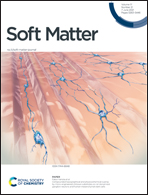Divalent ligand-monovalent molecule binding
Abstract
Simultaneous binding of a divalent ligand to two identical monovalent molecules is a widespread phenomenon in biology and chemistry. Here, we describe how two such monovalent molecules B bind to a divalent ligand AA to form the intermediate and final complexes AA·B and AA·B2. Cases wherein the total concentration [AA]T is either much larger or much smaller than the total concentration [B]T have been studied earlier, but a systematic description of comparable concentrations [AA]T and [B]T is missing. Here, we present numerical and analytical results for the concentrations [AA·B] and [AA·B2] for the entire range 0 < [B]T/[AA]T < ∞. Specifically, we theoretically study three types of experimental procedures: dilution of AA and B at fixed [B]T/[AA]T, addition of AA at fixed [B]T, and addition of B at fixed [AA]T. When [AA]T and [B]T are comparable, the concentrations of free ligands and molecules both decrease upon binding. Such depletion is expected to be important in cellular contexts, e.g., in antigen detection and in coincidence detection of proteins or lipids.



 Please wait while we load your content...
Please wait while we load your content...